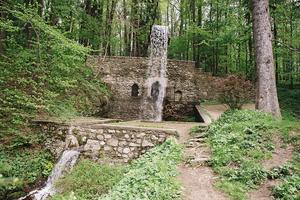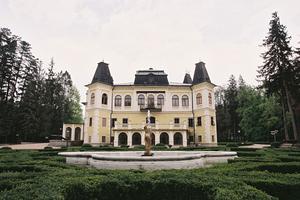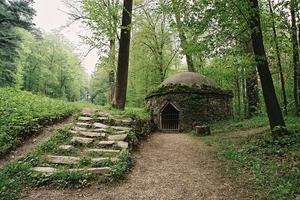This article was published in the Košice Region Travel Guide. Discover the region on the border between Western and Eastern European culture with our regionial guide.
A tragic March 2012 fire destroyed Krásna Hôrka, one of Slovakia’s best castles. It also decreased the number of tourists visiting the nearby elegant chateau Betliar because the two were most frequently visited the same day. This is a shame. The Andrássy family travelled the world, hunted with native tribes, collected rare objects, and their 50-room home reflects the expensive hobbies of its aristocratic owners. It would be a mistake to miss the chateau, a worthy destination on its own and part of the Slovak National Museum.
 Lost in Košice? Impossible with this travel guide. (source: Spectacular Slovakia)
Lost in Košice? Impossible with this travel guide. (source: Spectacular Slovakia)
The chateau’s foundation was laid in the mid-15th century, but what visitors see today is the result of centuries of renovations. The most extensive renovation occurred between 1880 and 1886. The Andrássy family, fleeing the advancing Russian troops, left Betliar in 1944 and the estate was nationalised in 1945. It became a museum in 1953 with the stated goal of showing the public how aristocratic home decor developed in the 18th and 19th centuries.
The property more than meets this goal. It is a veritable Downton Abbey in Slovakia that is frozen in time. Remarkably, none of the furnishings were stolen and the chateau was not damaged or even vandalised during World War II. Tours (about 90 minutes) are offered in various languages, and the atmosphere is intimate with small groups able to get up close and personal with the contents (most of which are described in English).
The chateau’s uniqueness lies in the authenticity of the furnishings, all are original including several 18th century wall hangings. The 18th and 19th century-furnished rooms appear well used and comfortable rather than stuffy and untouchable. When the family bought new furniture, the old furniture was placed in the servant’s quarters, so there are no stark differences in the look of those who lived “upstairs” and those who lived “downstairs”. Although it is grand, the chateau maintains a homey feel.
Family portraits grace the walls with the most impressive hanging in the Family Salon, located near the entrance and reached via the neo-gothic wooden staircase. The impressive library started by Leopold Andrássy and maintained by successive generations of the family contains 15,000 volumes in tall oak bookcases in neo-baroque style. A glance up reveals the Murano glass chandelier.
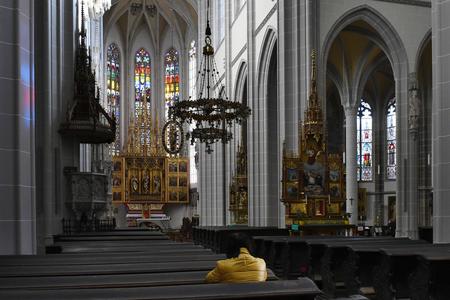
In keeping with the family’s exotic hunting tastes, various rooms depict the thrill of the kill. One can find the preserved head of an African elephant as well as a water buffalo, a rhinoceros, tortoise and two crocodiles. Two real Egyptian mummies, the sealskin clothes of an Eskimo, and the incomplete outfit and weapons of a Japanese Samurai warrior can be viewed in the “Gallery of Exotic Rarities”. Collections of porcelain, silver and art, among other things, abound.
While there is much to see inside the chateau, look outside to complete the experience. An 57-hectare nature park where landscaping was made a priority from the 16th to 19th centuries reflects the same thoughtful attention to symmetry and beauty with specimen plantings from around the world. The park was entered on the list of Historical Landscape Gardens of the World in 1977, though a windstorm heavily damaged the park in March 2013.
Opening hours:
The mansion is open all year long from Tuesday until Sunday.
Ticket prices:
Admission is €8. For more pricing information, visit the museum website.
Betliar Mansion (Kaštieľ Betliar)
Address: Kaštieľna 6, Betliar; Phone: +421 (0)58 798-3197; Website: www.snm.k


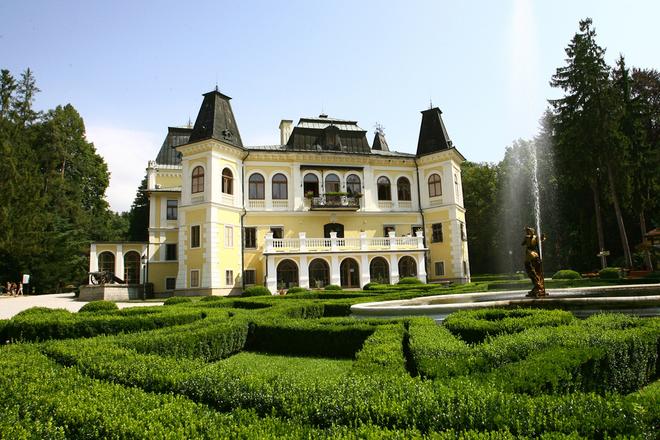 Betliar (source: Ján Krošlák, SME)
Betliar (source: Ján Krošlák, SME)
